January: Thaw and Tasks
At the beginning of January, the wintry light on the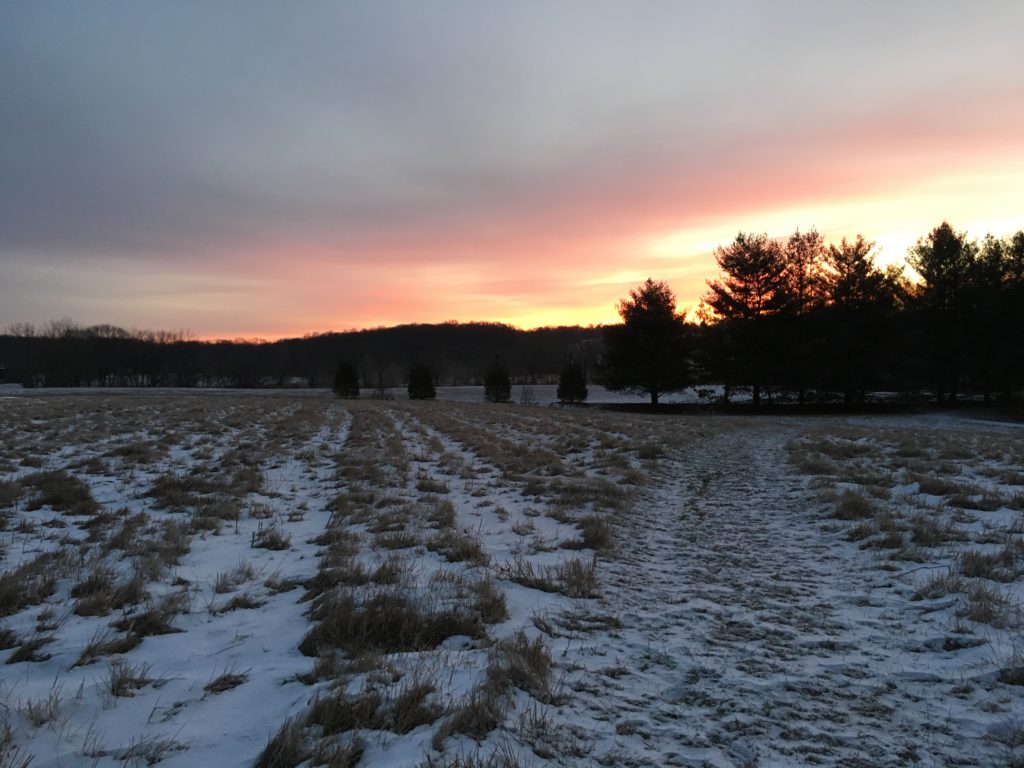 frozen, stubbly grass is so bleak. And then it snows making the meadow come alive. The white snow reflects the light of the moon, the stars and the morning sun. The fire-y sunrise is awe inspiring against the starkness. But the snow isn’t just beautiful, it protects and nourishes the meadow by, among other things, providing:
frozen, stubbly grass is so bleak. And then it snows making the meadow come alive. The white snow reflects the light of the moon, the stars and the morning sun. The fire-y sunrise is awe inspiring against the starkness. But the snow isn’t just beautiful, it protects and nourishes the meadow by, among other things, providing:
- A frozen cover to protect plants and soil from winter winds
- Needed moisture for roots that continue to develop over the winter
- Needed moisture for the water table that has become depleted from repeated years of near drought
- And the snow provides a stark outline of the paths so no one (except the deer) steps on the fragile plants
Year 1 was an experiment in quickie meadow building: see what existed in the field’s seed bank 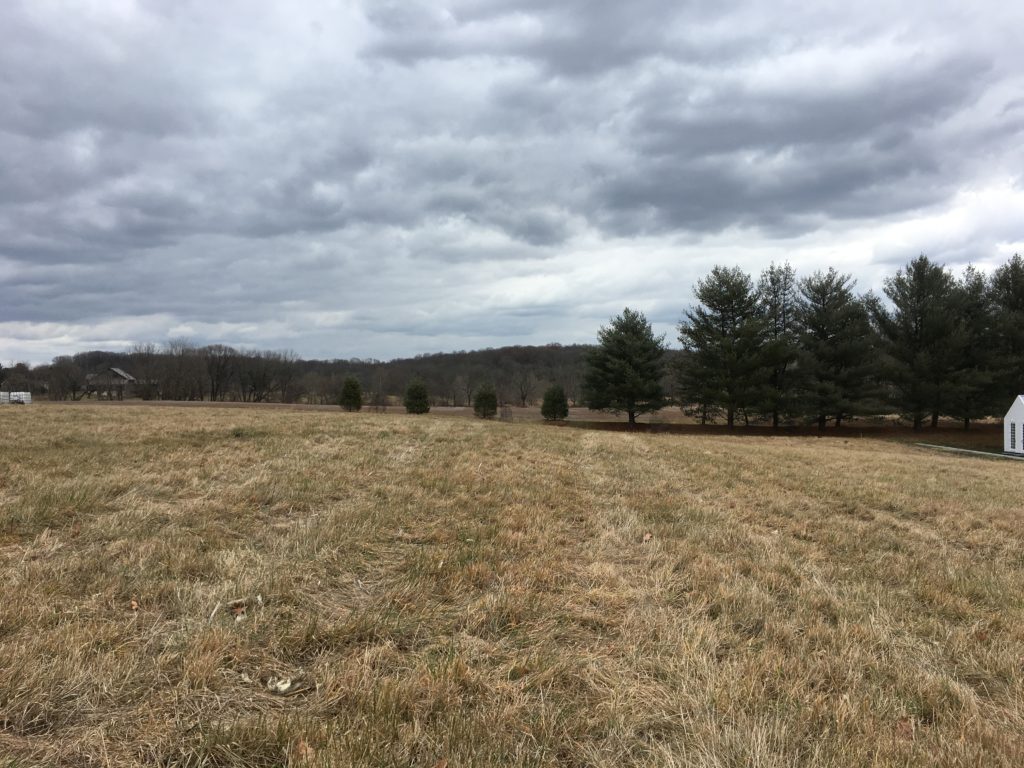 when it was allowed to grow and then use that growth as a base in Year 2 to build out the meadow with additional custom designed seed mixes.
when it was allowed to grow and then use that growth as a base in Year 2 to build out the meadow with additional custom designed seed mixes.
The first year of the meadow was a success for two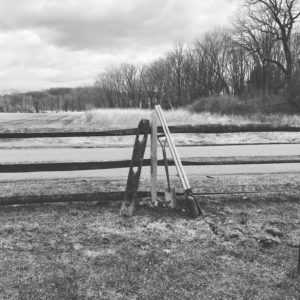 major reasons: a very vibrant, diverse variety of grasses and wildflowers were already present in the field and the annual and perennial native plant seeds concentrated at the houses were full of vivid, eye-catching flowers. Figuring out how to augment the existing with seed mixes that would balance and enliven the fields was the challenge for Year 2.
major reasons: a very vibrant, diverse variety of grasses and wildflowers were already present in the field and the annual and perennial native plant seeds concentrated at the houses were full of vivid, eye-catching flowers. Figuring out how to augment the existing with seed mixes that would balance and enliven the fields was the challenge for Year 2.
The winds and bitter cold of January made this planning a delightful activity – cozy inside with an inspiring view – but during the brief thaw there was a short period of time for activities like split-rail fence mending and installing deer caging on shrubs and small trees to protect them from male deer who sharpen their antlers on delicate trunks. They tear the bark off, ripping into the tree’s delicate tissue. One new tree was severely damaged by deer the day before the cages went up and will need careful watching and support as it tries to heal its wounds.
February: Planning and More Planning
Designing a garden is much like painting – envisioning the canvas, finding a color palette that is just right, and then identifying the right plants for the right spots. A meadow is really just a big garden.
Canvas: It would be easy for the meadow to be disconnected from the rest of the property but the design attempts to weave it into the whole by:
-
- connecting it via paths that invite people in to walk, enjoy and transit through
- bringing the edges down to the tree line and softening the line with smaller trees and shrubs to make a more natural transition from forest to meadow
Color: Blue is the family’s favorite color. Weaving blue, purplish-blue and pinkish-blue across the field and across the growing season would be accomplished using long blooming flowers like corn flower, aster, and delphinium, with short lived vibrant blues from Jacob’s Ladder and poppy and filling the field with bluish stemmed grasses like Big Bluestem. Yellow, pink, white would complement the blue and add punches of color.
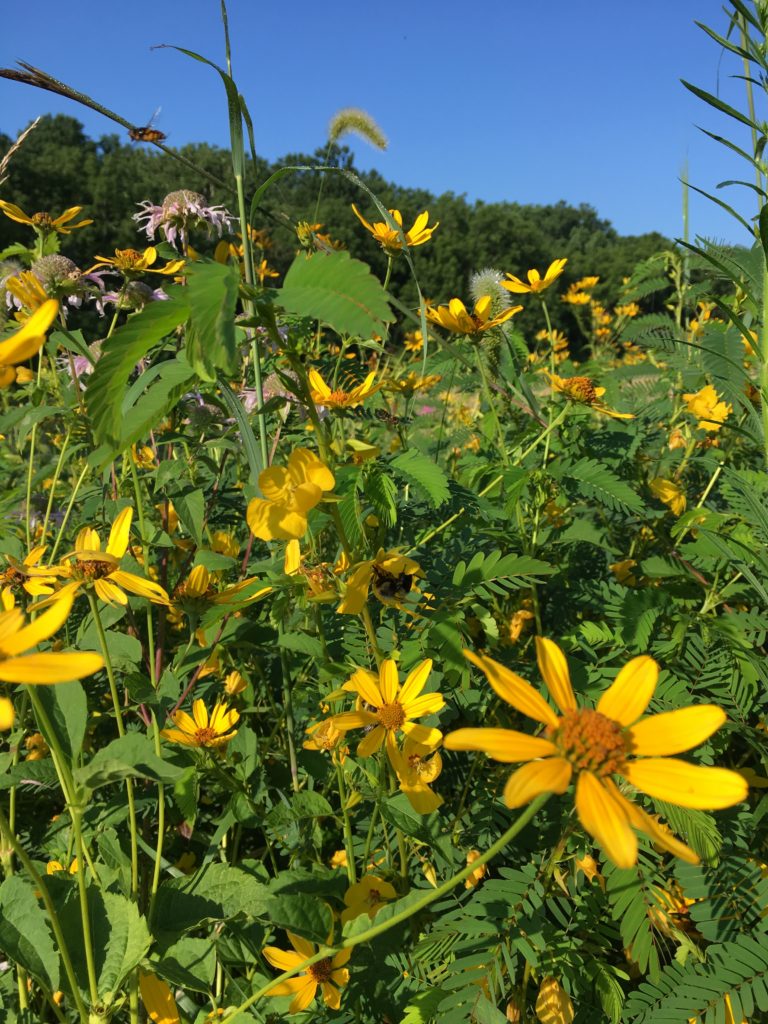 Plants: Planning hand-crafted, site-mixed seed combinations allows for a targeted, micro-ecosystem, and soil condition approach and makes available a broad array of plants that might not be available from growers while being very budget aware. I had, to great success, used Ernst Conservation Seed mixes in Year 1 to build out the Old Construction Road portion of the meadow and decided to use those same blends again but to add a select group of individual seeds to the order. Using the mixes as a base, specific combinations could be mixed and matched to reflect the plan.
Plants: Planning hand-crafted, site-mixed seed combinations allows for a targeted, micro-ecosystem, and soil condition approach and makes available a broad array of plants that might not be available from growers while being very budget aware. I had, to great success, used Ernst Conservation Seed mixes in Year 1 to build out the Old Construction Road portion of the meadow and decided to use those same blends again but to add a select group of individual seeds to the order. Using the mixes as a base, specific combinations could be mixed and matched to reflect the plan.
The Year 1 quickie meadow had shown that the main field was primarily cool season grasses with very little green present during the hot summer months. It also showed that although there were a handful of wildflower species present in that field, they were sparsely distributed and, besides the milkweed and New England Aster, were low growing. The ‘look’ of the field lacked height and color diversity in the late spring and summer months.
To counter this, part of the seed order repeated Year 1: Warm Season Grass Mix (ERNMX-117-150317) with Native Upland Wildlife Meadow Mix (ERNMX-123-160211) and Northeast Annual and Perennial Wildflower Mix (ERNMX-168-160226) and specific wildflowers were included to provide points of emphasis:
- Joe Pye Weed (Eupatorium fistulsom): a tall, strong stemmed, native with a big blueish flower head that persists to a dried seed head that can grow above the height of the grasses in the middle of the meadow and wave in the wind without breaking. Bees love Joe Pye in the spring and birds snack on it in the fall.
- Blue mist flower or Hardy argeratum (Eupatorium coelestimun:) a relatively short (18-30”) deep green leaved, blue flower that blooms for a long period and spreads itself about. It will peak through the grasses along the edges of paths with flashes of color. Blue mist is a magnet for small and large bees.
- Baptisia australis: a very hardy, shrubby plant that has a blue – blueish flower spike in the spring. As the season moves on, the flowers develop into blackened seed pods that rattle in the wind. Anyone growing Baptisia from seed needs to be in it for the long run as it can take 3-4 years for the plant to fully develop. By Year 4, these should be on the way to being very established and by Year 5 should put on quite a show. Standing 3-5 feet tall with an equal spread, they will punctuate the close-in, spring field with color and will be worth the wait. Bumblebees love Baptisia.
- Native Sunflower (Helianthus annus:) a tall, strong stemmed, multi-headed yellow sunflower that nods in and out of the grass heads as the wind blows but does not break. Native sunflower grows in almost any soil condition, loves full sun and is a pollinator magnet throughout its long blooming season and is a place for birds to grab a fall snack of nutritious seeds.
- The upper portion of the meadow is drier and seems to be less fertile (soil tests show that it has similar properties to the mid-field but, does not result in the same density and height. This may be because it is flatter and drier.). Although the unwanted thistle loves it, the planned for grasses and milkweed grow shorter and sparser up there. To help the robustness of this area, the seed order also included Ernst’s Eastern Ecotype (ERNMX 177) that includes Big Bluestem (Andropogon gerardii), Indiangrass (Sorghastrum nutans), Switchgrass (Panicum virgatum) and Virginia Wildrye (Elymus virginicus), all of which should do well.
March – Waiting for the snow to stop and go away
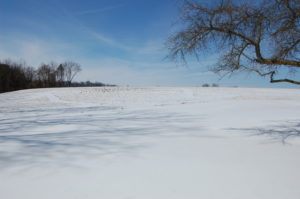 The seeds arrived in mid-March just in time for
The seeds arrived in mid-March just in time for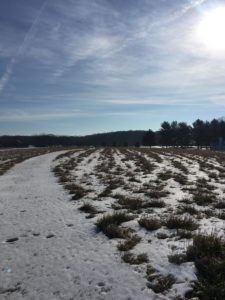 b more snow. These late season snows are tough for the farmers because the snows create lots and lots of mud and make it hard to get into the fields with planting machinery. Hand-casting seeds has its own mud related issues – slips and falls being one that I remedy by having many changes of clothes with me at all times. But it may also lead to soil issues. Treading on mud causes compaction of the soil which squeezes all of the air out, it also reduces water infiltration – this is especially true of the clay soils in the meadow. It also makes it harder for the seedlings to dig roots down. Foot traffic has less impact than tractor tires but it still has an impact, so staying off the planting areas until things dry out a bit was important.
b more snow. These late season snows are tough for the farmers because the snows create lots and lots of mud and make it hard to get into the fields with planting machinery. Hand-casting seeds has its own mud related issues – slips and falls being one that I remedy by having many changes of clothes with me at all times. But it may also lead to soil issues. Treading on mud causes compaction of the soil which squeezes all of the air out, it also reduces water infiltration – this is especially true of the clay soils in the meadow. It also makes it harder for the seedlings to dig roots down. Foot traffic has less impact than tractor tires but it still has an impact, so staying off the planting areas until things dry out a bit was important.
As the month wore on I was increasingly nervous that I would not have to deal with mud because the meadow might never defrost! On March 20th with the snow still firmly entrenched I turned to other garden tasks that required enough focus to stem the panic: repairing the deer cages around the new trees that had been damaged by wind and animals, pruning the apple 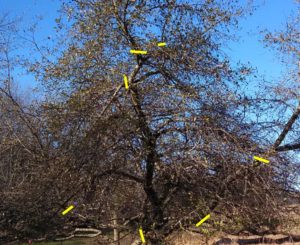 trees and bringing the branches inside to force, trimming the large meadow edge trees, clearing the stream of branches and debris, cleaning the shed, and having the tractor serviced.
trees and bringing the branches inside to force, trimming the large meadow edge trees, clearing the stream of branches and debris, cleaning the shed, and having the tractor serviced.
One way to figure out where to prune a tree or shrub is to take some pictures of it. Print these photos and then, using a tracing paper overlay, draw ‘cuts’ to see how it will look after you are done. When you have identified the best pruning plan, copy the ‘cuts’ onto the picture itself. This will help you guide the tree crew or your own actions. It is nice to not be surprised and to ensure that the tree does not get over-pruned.
Tasks complete, now there is waiting for nature to prepare itself for the growing season. To catch up on the beginnings of the meadow – check out the Year one story at: http://www.greenbeams.us/the-making-of-a-meadow-winter/
